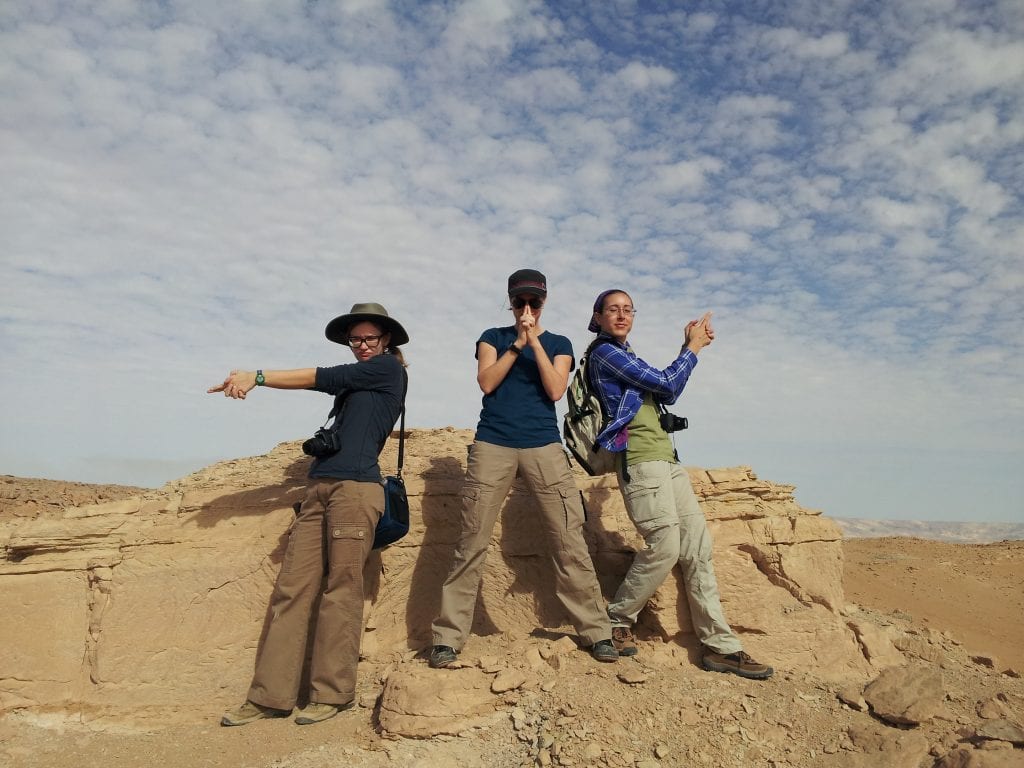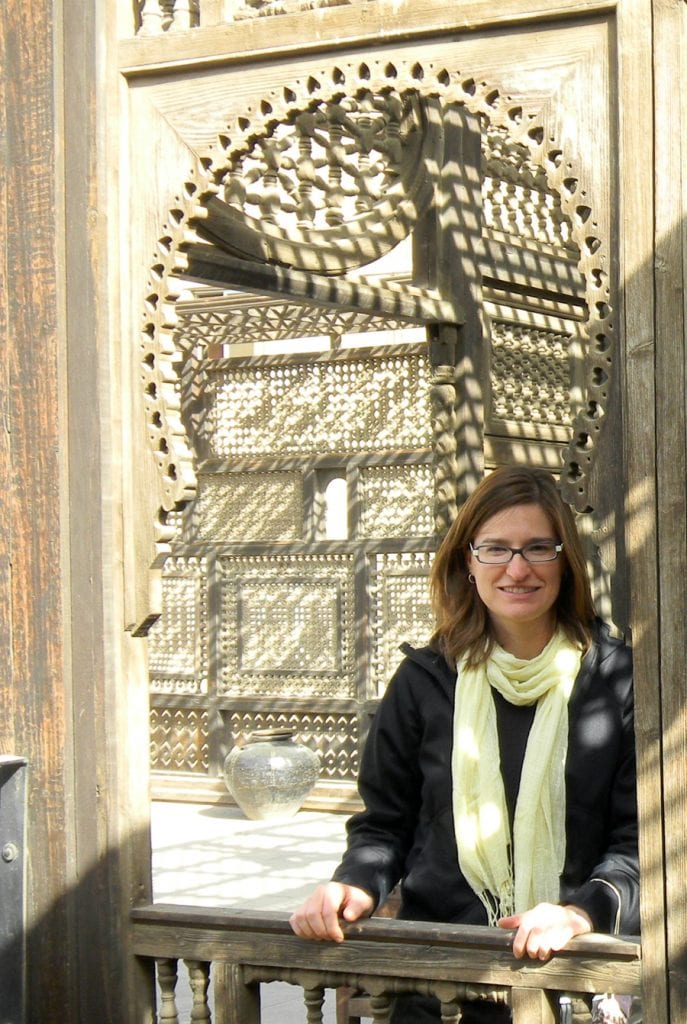Another Side of Anthropology: Infants and Children

Sandra Wheeler, Ph.D., (center) with her graduate students in Egypt
Not many anthropologists focus on infants and children when they research the past, but UCF bioarchaeologist Sandra Wheeler, Ph.D., does just that. She investigates the burial practices of ancient cultures and the archaeological contexts surrounding death and burial, creating an image of how society treated their youth and infants.
She works with skeletal and mortuary evidence from archaeological excavations of an ancient Romano Christian cemetery in the Dakhleh Oasis, Egypt.
“Once people adopted early Christianity, they started burying people in a different way,” Wheeler said. “In older time periods, people were buried in family tombs and different kinds of places. When people adopted Christianity, everyone was buried in the same place and the same way—including fetuses.”
This marks a significant cultural shift, as even children who weren’t yet born were now buried in the same manner as adults. This practice provides insight into the beliefs of early Christians, allowing their views to become clear.
“This can reveal what their ideas of the afterlife and personhood were,” Wheeler said. “In some cultures, we see very young children buried in domestic spaces, such as underneath household floors. It reflects the idea that the body is connected to the soul or spirit, and having the child close can bring them back to the household.”

Wheeler in Cairo, Egypt
Unfortunately, due to current security situations in this part of Egypt, Wheeler has been unable to return to the site. She is working with the evidence and data collected when she last visited the cemetery in 2012 and from previous field seasons. But her research hasn’t been held up—she works with her wife, Lana Williams, Ph.D., and her colleague, Tosha Dupras, Ph.D., to carefully analyze the samples of ancient bone, hair and teeth stored in the Laboratory for Bioarchaeological Sciences at UCF.
Williams specializes in human hair analysis, which can reveal much about the health status of the people to whom the hair belonged. Wheeler works alongside Williams and Dupras to examine ancient maternal health, and they are interested in events surrounding maternal mortality and childbirth.
“We look for stress events in women we suspect were pregnant and died of complications during pregnancy, and compare that with the fetal data from the cemetery,” Wheeler said. “It provides great insight into a dangerous time in a woman and an infant’s life.”
Using stable isotopic analysis, Williams is able to identify pregnant women through the variation in nitrogen levels in their hair. The body’s nitrogen pool is used in tissue synthesis during pregnancy, so a pregnant woman’s hair shows a pattern of nitrogen depletion followed by enrichment to pre-pregnancy values over the nine months of her pregnancy. Clinical data from modern pregnant women show the same patterns as found in the ancient hair gathered from the site.
“This is significant because we can make a connection from an archaeological population and show how, in modern times, maternal mortality is high when there is no access to modern health care,” Wheeler said.
Studying the causes from which women died during pregnancy can help prevent modern maternal deaths. Aside from lack of prenatal care, health complications for women can also arise from frequent, consecutive births.
“We are interested in the terminal effects that closely-spaced and multiple births have on women and their health,” Wheeler said. “Multiple pregnancies in a short period of time can negatively affect a mother who doesn’t have time to recover. This can cause complications in later births.”
Medical teams can help reduce the dangers of pregnancy, but without attending clinics or receiving prenatal care, many modern women risk the same complications as those who died during childbirth in ancient times.
Wheeler was invited to present her research on this topic at the one-year anniversary of the founding of the Centre for the Archaeology of Childhood at the University of Sheffield. The Centre was founded as the only dedicated research cluster focused on the archaeology of childhood in the United Kingdom. It draws together researchers with interests in exploring the nature and experience of childhood in the past.
She gave a talk as part of their Medieval and Ancient Research Seminar series, a seminar series seeking to bring together the research conducted on ancient and medieval worlds.
Her presentation brought rise to another conference invitation, sponsored by the Department of Archaeology at the University of Sheffield and the Society for the Study of Childhood in the Past. This spring, Wheeler will present at the Maternitas in Classical Antiquity conference at the British School in Rome, focusing on maternity and motherhood in the ancient world.
Before that, her research will be published as part of a book on social theory in bioarchaeology entitled, Integrating Emerging Bioarchaeological Methods and Theory into the Study of Children and Childhood in the Past, published by the University Press of Florida. The book comes out in February 2018.
Ancient motherhood and childhood have always interested her, but now as a parent of three children with her wife, Wheeler has a personal connection to the women and children she studies.
“After becoming a parent, it’s made my research even more interesting,” Wheeler said. “I feel a greater involvement with my scholarship now that I’m a parent. These people died because they didn’t have access to modern medical care, but now times are different. I am privileged to work at this site and I feel a responsibility to present my research and help shed light on the experiences of these mothers and their infants and children.”
Learn more about UCF’s new Integrative Anthropological Sciences Ph.D.
